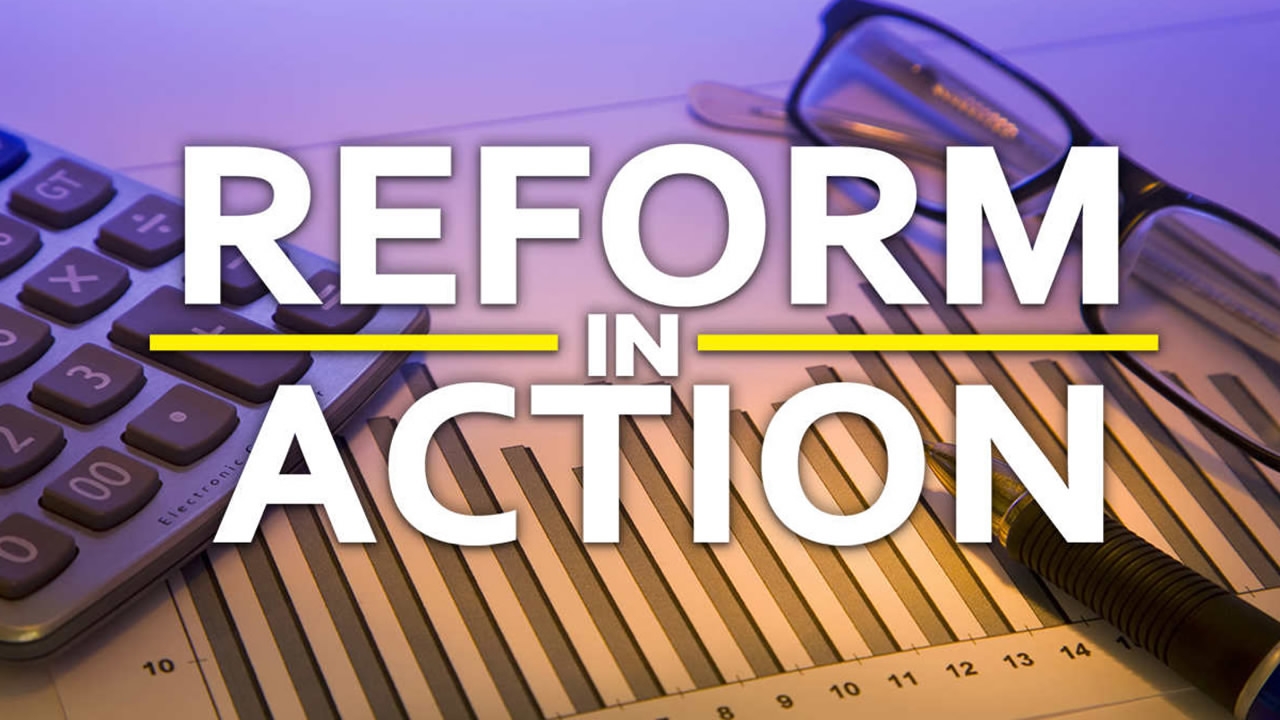
Business
22:04, 16-Oct-2017
Reform in Action: China’s VAT reforms save billions of tax money
By CGTN’s Zheng Junfeng and Xu Xinchen

In the past five years, the most critical change in China’s economy has been the shift from quantity to quality. That’s the so-called New Normal, which means economic growth changes from high-speed to middle-to-high speed, shifting the balance of growth away from heavy-industrial investment and toward domestic consumption.
An expert said the fiscal reform has helped maintain the sustainable growth, achieving the goal of the New Normal, but still needs more efficiency and transparency.
Data from Chinese Finance Ministry shows the government spending reached almost 15.2 trillion yuan (2.49 trillion US dollars) in the first nine months, increasing by 11.4 percent from a year earlier.

People’s Bank of China Governor Zhou Xiaochuan warned Sunday that the nation's overall leverage ratio is still high and calls for more fiscal policy clarity and constraint of local government debt. And the State Council said recently in a notice published on its website that “Overlapping central and local government fiscal responsibilities must be reduced and standardized.”
“The certain message from Zhou’s speech is the transparency of the budget system, especially for the central government, provincial government and local government. China needs to reform to rearrange resource ability of the different level of governments since the local governments played the low for the local development,” said Zhao Zhongxiu, vice president of University of International Business and Economics.
China has been looking to streamline spending and revenue, especially when local governments face mounting debt woes and falling tax revenues.
The country has rolled out a new value-add tax (VAT) system that is collected centrally, replacing a business tax system that was collected by local governments. And more Chinese businesses will soon be able to enjoy the benefit of the VAT, as more sectors will replace their business taxes with the new tax system.

Government data shows that Chinese businesses have saved more than 1.6 trillion yuan (242 billion US dollar) of tax money over the past five years, and involved 16 million commercial taxpayers. It has solved the double taxation problems and reduced the tax burdens of Chinese companies.
According to Chinese Finance Ministry, the government spending reached almost 15.2 trillion yuan in the first nine months, while fiscal revenue grew 9.7 percent from a year earlier. The Ministry also said, revenue from the central government jumped 10.6 percent, and the revenue generated from local governments rose 8.1 percent. Thanks to rapid growth in the industrial sector, the total industrial VAT increased over 21 percent year-on-year, outperforming the overall VAT revenue, which increased 13.1 percent year-on-year.
Shanghai was among the first cities to participate in this tax reform pilot program. Back in 2011, the city wanted to grow its heavy taxed service sector. Double taxation and low deduction rate have limited the expansion of businesses. Back then service sector only accounted for 58 percent of the city's GDP, while the number in Beijing already reached nearly 80 percent, according to the National Bureau of Statistics (NBS).

2012 was a turning point: The government announced replacing business tax with the VAT in transportation and service industries in Shanghai. It has spurred the growth of those companies. And Shanghai’s manufacturing sector has benefited from the VAT most. Ossen Group, a bridge-cable manufacturer, for instance, is one of them making a huge tax deduction with the VAT reform, cutting millions of yuan on the transaction.
"There was a 40-million-yuan tax deduction including purchasing the buildings and construction. That put everything in motion," noted Gu Yuehua, VP of Ossen Group.
The VAT reform is one of the most significant tax reforms ever happened in China, to help the country go from manufacturing dependent to being more service oriented, but the system still needs fine tuning.
"Manufacturing companies they have this VAT system for more than 20 years. And a lot of rules were built up 20 years ago, but we have a lot of new challenges, new economics new types of businesses. That requires the system to make relevant change. Banks system, financial system we have a lot of initiatives and creative things. Right now we have the VAT reform just to convert the business tax in service areas to the VAT area," noted Kevin Zhou, tax partner at auditing firm Ernst & Young.
Read more:

SITEMAP
Copyright © 2018 CGTN. Beijing ICP prepared NO.16065310-3
Copyright © 2018 CGTN. Beijing ICP prepared NO.16065310-3